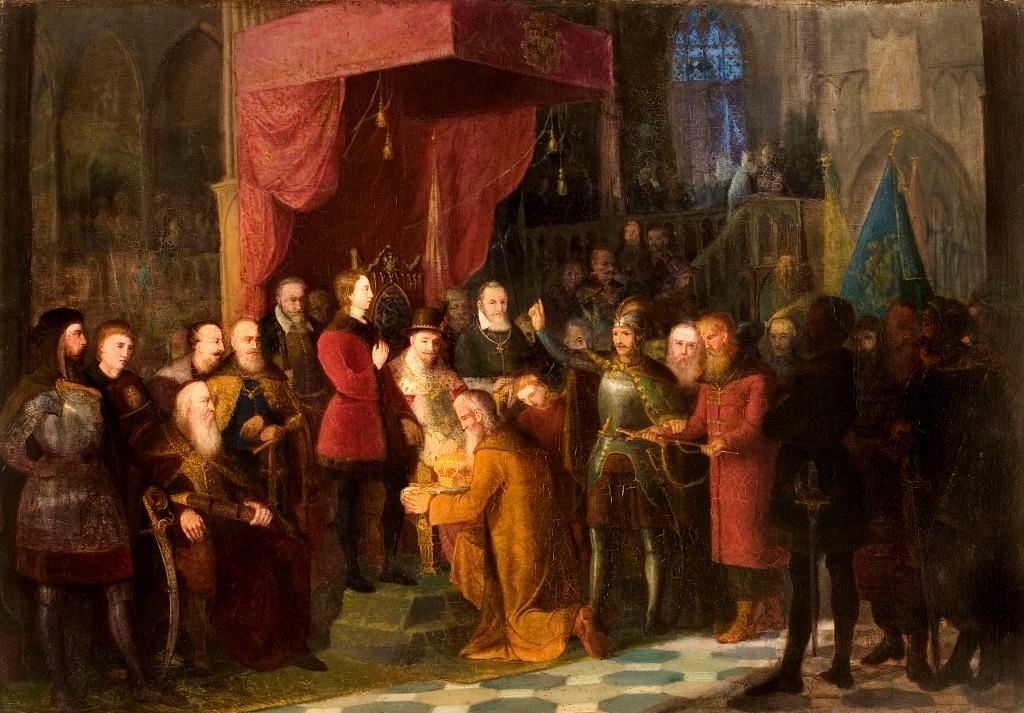The Polish commander, Stanislaw Żółkiewski, took the Russian Tsar, Vasily Shuisky, captive after entering Moscow. He brought him to Warsaw, where the Tsar bowed before the Polish King Sigismund III.
Thanks to the victory of the Polish commander, Stanisław Żółkiewski, over the Moscow-Swedish army at the Battle of Klushino (4 July 1610), the road to Moscow was opened. The Polish hetman made a deal with the boyars (Russian noblemen) based on the assumption that the son of the Polish king, Sigismund III, Ladislaus, would convert to Orthodoxy and ascend the Moscow throne. On the base of this agreement, Polish-Lithuanian troops entered Moscow. It should be noted that Poland and Lithuania had formed a single state, the Polish-Lithuanian Commonwealth, since 1569 (the Union of Lublin).
Żółkiewski takes the Tsar captive
The Polish commander, Stanislaw Żółkiewski, after entering Moscow, took the Russian Tsar Vasyl Shuisky and his brothers Ivan and Dmitri captive. At the same time, he decided to take them before the Polish King Sigismund III. He arrived in Warsaw, then already the capital city, on 29 October 1611, where he happened to be at a session of the Sejm. He rode triumphantly into Warsaw, carrying his captives in his carriage.
He was heading for the Royal Castle. Zolkiewski crossed the threshold of the royal residence, leading Tsar Shuisky and his brothers. He entered the senatorial hall, where MPs, senators and, of course, King Sigismund III were waiting. Zolkiewski took the floor and talked about the size and power of Moscow. He also spoke about the reign of Vasyl Shuisky in the Muscovite state, pointing out unflatteringly that he came to power as a result of a conspiracy. Feliks Kryski, the Crown Chancellor, spoke about the Hetman’s merits on his behalf of King Sigismund III.
Vasily in captivity
Vasily and his brothers approached the Polish king and paid a low bow. They kissed the hand of Sigismund III and promised their obedience. They also vowed not to violate the borders of the Polish-Lithuanian Commonwealth.
What happened to the tsar next? He remained in Polish captivity. He lived there until 22 September 1612, when he died, most likely as a result of an infectious disease. His brothers and sister-in-law were also supposed to have died for the same reason, a week after Vasily. Some suspected, however, that they were poisoned.





